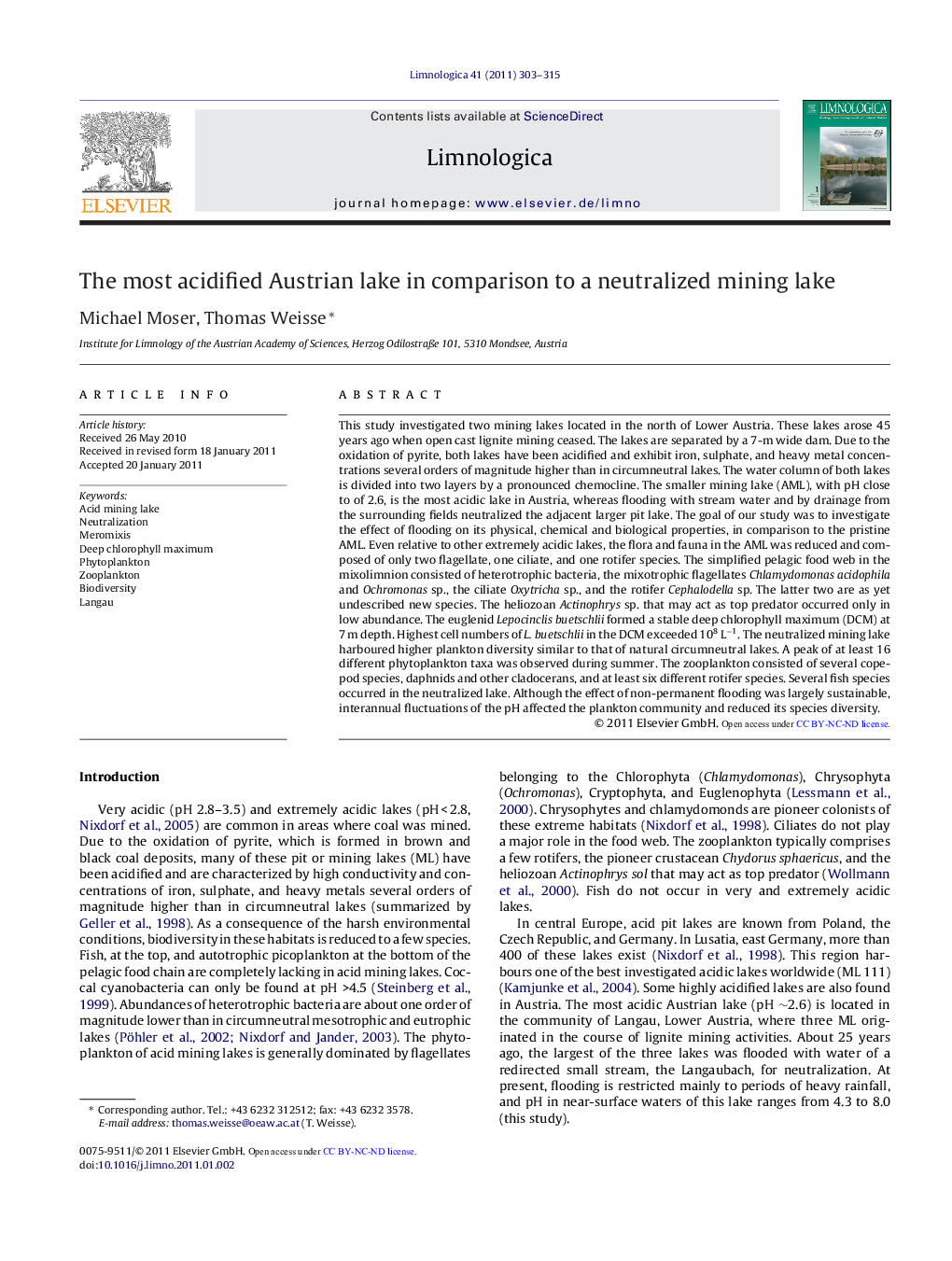| Article ID | Journal | Published Year | Pages | File Type |
|---|---|---|---|---|
| 6305681 | Limnologica - Ecology and Management of Inland Waters | 2011 | 13 Pages |
This study investigated two mining lakes located in the north of Lower Austria. These lakes arose 45 years ago when open cast lignite mining ceased. The lakes are separated by a 7-m wide dam. Due to the oxidation of pyrite, both lakes have been acidified and exhibit iron, sulphate, and heavy metal concentrations several orders of magnitude higher than in circumneutral lakes. The water column of both lakes is divided into two layers by a pronounced chemocline. The smaller mining lake (AML), with pH close to of 2.6, is the most acidic lake in Austria, whereas flooding with stream water and by drainage from the surrounding fields neutralized the adjacent larger pit lake. The goal of our study was to investigate the effect of flooding on its physical, chemical and biological properties, in comparison to the pristine AML. Even relative to other extremely acidic lakes, the flora and fauna in the AML was reduced and composed of only two flagellate, one ciliate, and one rotifer species. The simplified pelagic food web in the mixolimnion consisted of heterotrophic bacteria, the mixotrophic flagellates Chlamydomonas acidophila and Ochromonas sp., the ciliate Oxytricha sp., and the rotifer Cephalodella sp. The latter two are as yet undescribed new species. The heliozoan Actinophrys sp. that may act as top predator occurred only in low abundance. The euglenid Lepocinclis buetschlii formed a stable deep chlorophyll maximum (DCM) at 7Â m depth. Highest cell numbers of L. buetschlii in the DCM exceeded 108Â Lâ1. The neutralized mining lake harboured higher plankton diversity similar to that of natural circumneutral lakes. A peak of at least 16 different phytoplankton taxa was observed during summer. The zooplankton consisted of several copepod species, daphnids and other cladocerans, and at least six different rotifer species. Several fish species occurred in the neutralized lake. Although the effect of non-permanent flooding was largely sustainable, interannual fluctuations of the pH affected the plankton community and reduced its species diversity.
